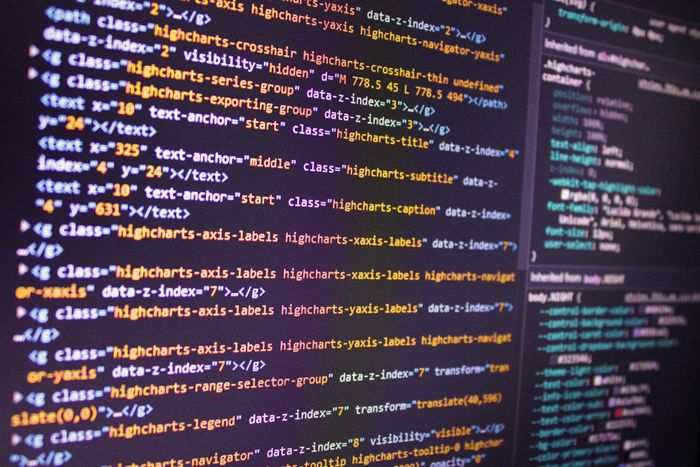 How to Land a Data Analytics Job in 6 Months
How to Land a Data Analytics Job in 6 Months
Go from zero to hero in under six months. Data science has a very high barrier of entry. It is a very competitive field that everybody from different educational backgrounds are looking to get into. Here is useful advice on how to proceed.

Photo by Kaleidico on Unsplash
Data analysts are some of the most sought after professionals in the world. These are people who help companies make informed business decisions with the help of data.
There is a lot of hype surrounding data science right now.
However, data science has a very high barrier of entry. It is a very competitive field that everybody from different educational backgrounds are looking to get into.
It is a lot easier to get a job in data analytics than in data science.
Most data science positions require you to have a post-graduate degree in a quantitative field. However, most data analysts I know come from a completely unrelated background and do not possess technical degrees.
Data analytic skills can easily be gained by taking online courses and doing boot camps. The learning curve isn’t as steep as that in data science, and it can be learned in a shorter span of time.
Even if you have no previous programming or technical experience, you can gain the skills required to become a data analyst in just a few months.
I secured an internship in data analytics in just six months with these help of these resources.
After doing a 3-month internship, I received an offer to join the company as a data analyst.
In this article, I will describe the steps I took to learn data analytics. It took a lot of trial and error to find these resources and create a roadmap for myself.
If you follow these steps, you can learn the skills required to get an entry level data analytics job in just a few months. You can even do it faster than six months depending on the amount of time you spend studying everyday.
Step 1: Learn Python

Photo by Christopher Gower on Unsplash
To get into the field of analytics, you will first need to learn a programming language. Python and R are the two most commonly used languages in this domain.
If you’re just starting out, I strongly suggest learning Python. It is a lot more user-friendly than R and it is easier to pick up. Python also has a wide array of libraries that make tasks like data pre-processing a lot easier.
Python is also more widely used than R. If you were to move into a field like web development or machine learning in the future, you won’t need to learn a new language.
Online course
a) 2020 Complete Python Bootcamp: From Zero to Hero in Python:
Take this course if you are a complete beginner with no programming experience whatsoever. This course will take you through the basics of Python syntax, and you will learn about variables, conditional statements, and loops. This course is taught by Jose Portilla, one of the best instructors on Udemy.
b) Learning Python for Data Analysis and Visualization:
Once you have an understanding of Python basics and syntax, you can start learning how to analyze data with it. This course will walk you through libraries specific to data analytics such as Numpy, Matplotlib, Pandas, and Seaborn.
After taking these two courses, you will have a basic understanding of Python and its use in the field of analytics. Then, I suggest moving on to get some hands on practice with the language.
Coding challenge sites
To gain hands on practice, visit coding challenge sites like HackerRank and LeetCode. I strongly suggest HackerRank. They have coding challenges with varying levels of difficulty. Start out with the easiest ones, then work your way up.
When you start working in analytics, you will face programming issues on a daily basis. Sites like HackerRank will help improve your problem solving skills.
Spend around 4–5 hours daily solving Python HackerRank problems. Do this for around a month, and your Python programming skills will be good enough to get a job.
Step 2: Learn SQL

Photo by David Pupaza on Unsplash
SQL skills are necessary to get a job in analytics. Your daily task would usually involve querying large amounts of data from a database, and manipulating the data according to business requirements.
Many companies integrate SQL with other frameworks, and will expect you to know how to query data using these frameworks.
SQL can be used within languages like Python, Scala, and Hadoop. This will differ depending on the company you are working with. However, if you know SQL for data manipulation, you will be able to pick up on other SQL integrated frameworks easily.
I took this free course by Udacity to learn SQL for data analysis. DataCamp also has a popular SQL for data analytics track that you can try out.
Step 3: Data Analysis and Visualization

Photo by Clay Banks on Unsplash
You will need to know how to analyze data and derive insights from it. Knowing how to code or query data isn’t enough. You need to be able to answer questions and solve problems with this data.
To learn data analysis in Python, you can take this Udemy course I mentioned above. You can also pursue the data analyst career track at DataCamp.
After deriving insights from data, you should be able to present these insights. Stakeholders need to make business decisions based on the insights you present, so you need to make sure your presentation is clear and concise.
These insights are usually presented with the help of data visualization tools. Visualizations can be created using Excel, Python libraries, or business intelligence tools like Tableau.
If you want to become a data analyst, I suggest learning Tableau. It is one of the most commonly used reporting tool and is sought after by most employers.
This Udemy course by Kirill Eremenko is one of the best resource to learn Tableau.
Step 4: Data Storytelling and Presentation

Photo by Dariusz Sankowski on Unsplash
After completing the first three steps, you already have all the necessary skills to get an entry level job in data analytics.
Now, you will need to present these skills to a potential employer. If you don’t come from a technical background, you will need to show recruiters that you have the necessary skillset to become an analyst.
To do this, I strongly suggest building a data analytics portfolio. Build dashboards in Tableau, use Python to analyze Kaggle datasets, and write articles on your newly honed skills.
You can take a look at my portfolio site here.
Here are some examples of data analytic projects you can showcase on your portfolio:
- Create a Covid-19 world map dashboard
- Scrape music data from Spotify to identify top performing artists
- Use LinkedIn data to identify regions with the highest paying job offers
Showcasing projects like these on your resume will make you stand out to potential employers.
Make sure to tell stories around the projects you create. Document every step you took to create the project and write an article about it. You can even create your own blog and publish these articles.
This increases the chances of your article getting into the hands of another person, which means that there are higher chances of it being seen by a potential employer.
Conclusion
If you are looking to break into the data industry, data analytics is a good place to start. It has a lower barrier of entry compared to fields like machine learning.
You will enjoy working in the field of analytics if you like storytelling and creating presentations. Your daily work will involve explaining technical concepts to non-technical people, and you will need to work on improving your communication skills.
Remember, data analysis is a field that people spend their entire lives trying to learn. Even the individual skills required to become an analyst can take a lifetime to learn, so it is impossible to master in just a few months.
This article is only aimed towards people trying to get an entry level job in data analytics.
I managed to get a job in analytics in around 6 months by following the steps above. Even if you have no previous data experience, put in around 5–6 hours per day, and you will be able to do the same.
Education is the most powerful weapon which you can use to change the world
— Nelson Mandela
Bio: Natassha Selvaraj (LinkedIn) I am currently pursuing a degree in computer science, and I major in data science. My interest lies in the field of machine learning, and I have worked on a variety of projects in this domain. I also enjoy problem-solving and programming, which I do on a daily basis.
Original. Reposted with permission.
Related:

 How to Land a Data Analytics Job in 6 Months
How to Land a Data Analytics Job in 6 Months